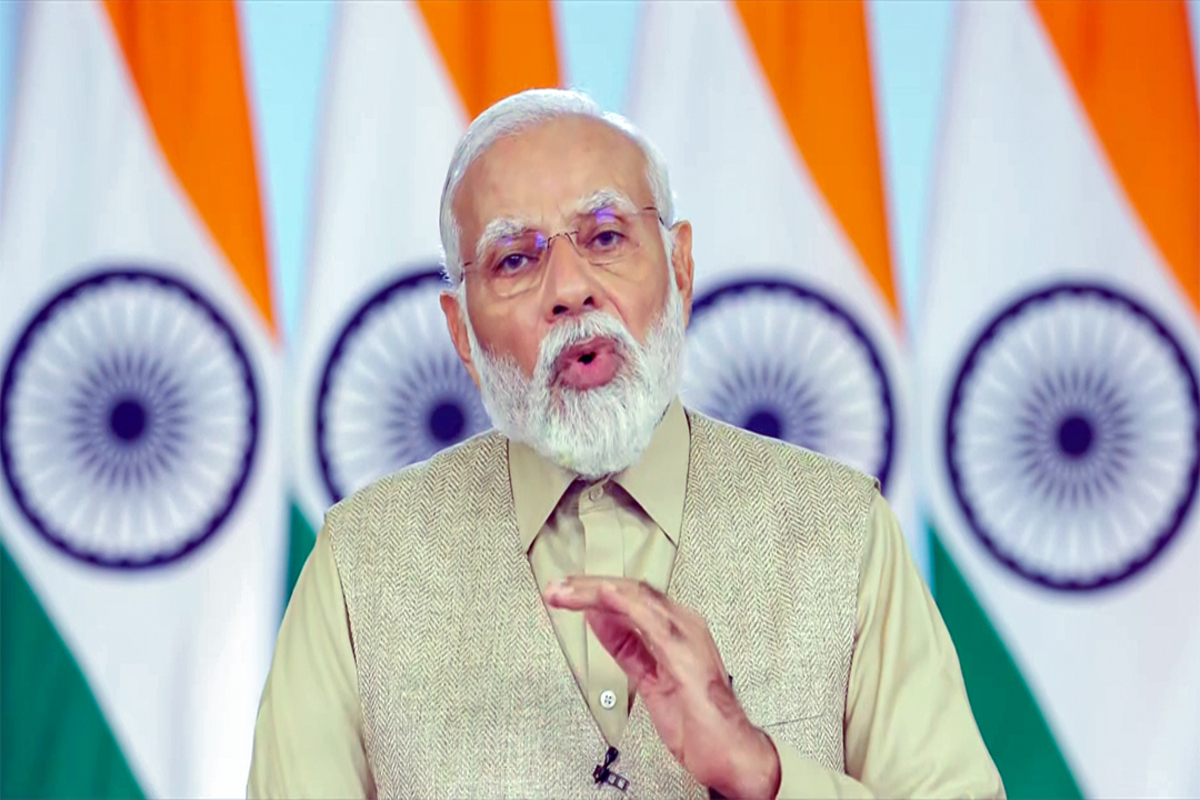Trade with Pakistan can help achieve 2047 goal
Prime Minister Narendra Modi wants India to become an advanced nation by 2047, exactly a hundred years after Independence.
Addressing the G20 Energy Ministers Meet in Goa, via video message, Modi said no talk about the future, sustainability or growth and development can be complete without energy.

Prime Minister Narendra Modi (ANI Photo)
Prime Minister Narendra Modi on Saturday told G20 energy ministers that the world looks up to them to advance a sustainable, just, affordable, inclusive, and clean energy transition, but while doing so, it should take Global South along, and ensure low-cost finance for developing countries.
The prime minister was addressing the G20 Energy Ministers Meet in Goa, via video message. He said no talk about the future, sustainability or growth and development can be complete without energy. It impacts development at all levels, from individuals to nations.
Advertisement
The prime minister said ways must be found to bridge technology gaps, promote energy security and diversify supply chains. He suggested strengthening collaboration on the ‘fuels for the future’ and remarked that the ‘High-level Principles on Hydrogen’ are a step in the right direction.
Advertisement
He said that transnational grid interconnections can enhance energy security and India is promoting this mutually beneficial cooperation with its neighbours.“Realizing the vision of inter-connected green grids can be transforming. It will enable all of us to meet our climate goals, stimulate green investment, and create millions of green jobs,” he said.
He extended an invitation to all participating nations to join the Green Grids Initiative – ‘One Sun, One World, One Grid’ of the International Solar Alliance.
Modi underlined that caring for the surroundings can be natural or cultural, but it is India’s traditional wisdom that strengthens Mission LiFE – Lifestyle for Environment, a movement that will make everyone a climate champion.
Every nation has a different reality and pathway for energy transition, but the goals of every country are the same, he said. India is making great efforts in green growth and energy transition. India is the most populated nation and the fastest-growing large economy in the world. “Yet, we are moving strongly on our climate commitments,” he said.
India has shown leadership in climate action, Mr Modi said. “We achieved our non-fossil installed electric capacity target nine years in advance. We have now set a higher target. We plan to achieve 50 per cent non-fossil installed capacity by 2030,” he said.
The prime minister said “India is also among the global leaders in solar and wind power. I am happy that the Working Group delegates visited the Pavagada Solar Park and Modhera Solar Village. They have witnessed the level and scale of India’s commitment to clean energy.”
In the last nine years, he said, India connected more than 190 million families with LPG while recording the historic milestone of connecting every village with electricity. Efforts were on to provide piped cooking gas to more than 90 per cent of the population in a few years. “Our effort is to work for inclusive, resilient, equitable and sustainable energy for all,” he said.
The prime minister said that in 2015, India began a small movement by launching a scheme for the use of LED lights which turned out to be the largest LED distribution program in the world, saving more than 45 billion units of energy per year.
“We have also started the largest agricultural pump solarization initiative in the world. India’s domestic electric vehicle market is projected to reach 10 million annual sales by 2030. We have commenced the rollout of 20 percent Ethanol Blended Petrol this year,” he said.
“Our aim is to cover the entire country by 2025. For decarbonizing India, we are working on a Mission mode on Green Hydrogen as an alternative. The aim is to make India a Global Hub for the production, use, and export of Green Hydrogen and its derivatives. We are happy to share our learnings,” the prime minister said.
Advertisement